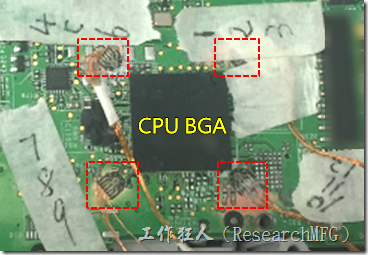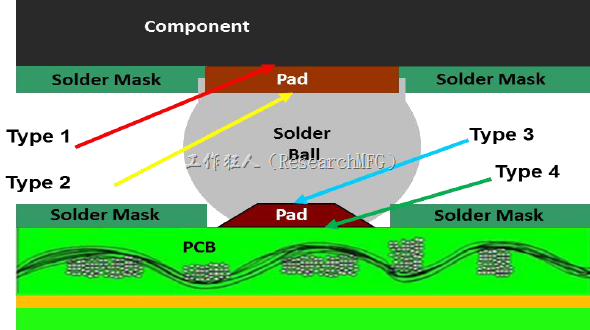
Congratulations! This article is the last one in this series. You won’t have to listen to WorkingBear ramble on about this boring topic again in the future!
Usage Environment is the Biggest Challenge of Stress Sources
After discussing the precautions and solutions for stress during assembly, let’s talk about the biggest source of stress for electronic products: the usage environment of end customers.
In fact, the various situations and environments that electronic products encounter in practical applications are the biggest challenges for products to face “stress”. For example, products accidentally falling onto concrete or marble surfaces, handheld devices may even roll down from stairs, and long-distance shipping or freight in containers must endure the high heat generated by exposure to the sun during the day and the cold after outdoor radiation cooling at night. The container may even be transported through extremely cold or hot areas. Therefore, general new products will arrange to do so-called “drop impact tests”, “tumble tests“, and “environmental temperature/humidity tests” during the Design Qualification (DQ) to simulate these actual situations that may occur.
Related reading: Requirements for drop impact test of bare machine/Drop test Methods and failure solution of tumble test
Based on the understanding of the WorkingBear, many products are actually stuck in the DQ stage. Then, the internal team begins to debate whether the testing conditions are too strict, whether the drop height of the bare machine can be reduced, whether the number of tumble tests can be reduced, and whether the soldering strength can be increased. Finally, they ask if the acceptance standards can be relaxed. If the standards are really relaxed, it is no different from turning a blind eye to the problem. WorkingBear has always believed that responsible R&D should solve the engineering problems that need to be solved during the product development stage, rather than remaining it to the continuous improvement unit and process after mass production.
WorkingBear often finds that even if the product passes the DQ test, after using it for a while in the market, customers still complain about product defects. This is even more so for products that have lowered DQ standards or barely passed the test. This is because the DQ test items and conditions often only simulate the user environment that we know, and some may even be excluded as extreme usage conditions. However, end users always have unexpected situations that cause product failures, such as:
-
Handheld products may often be accidentally sat on, either by placing them directly in the back pocket or on the car driver’s seat, and then forgetting and sitting on them again when getting back in the car.
-
Products that were originally designed for indoor use may suddenly be turned into automotive products by the marketing department. At this time, the product’s vibration resistance, stress impact resistance, and high and low temperature tolerance will become more demanding.
-
I/O connectors often need to be inserted and removed frequently. Whether the wiring position is frequently impacted or squeezed for a long time, sustained force may cause I/O connectors to fail and may also cause additional board bending, so general I/O connectors should have a mechanism design for the wire insertion “stop.”
-
Some products may be frequently picked up and dropped on the desk due to users’ bad habits or may be squeezed by other items.
-
Some products with buttons may have users who are extremely bored and keep pressing a certain button repeatedly or pressing it too hard, causing the button to excessively press the circuit board and deform.
Sometimes, unreasonable requests from clients can be shrugged off, but if the reliability of your competitors’ products is better and their prices are not more expensive, you can expect to be overtaken by them. Therefore, I strongly recommend that during the design of new products, RD should pre-design or reserve some mechanisms that can strengthen the product’s stress resistance or reduce stress effects. Furthermore, at the beginning of the new product design process, Workingbear suggest using computer-aided design (CAD) to simulate possible stress concentration areas and then address them. Waiting until DQ testing or market feedback to address problems is not ideal, nor is attempting to reinforce soldering through SMT to overcome stress problems. It’s important to understand that significant design changes after product design completion can be difficult and may have side effects, requiring re-certification.
Workingbear understand that RD bears many responsibilities, requirements, and frustrations, as all problems stem from research and development. Manufacturing factories require RD designs to comply with DFM (Design For Manufacturing), while repair centers require designs to comply with DFR (Design For Repair). The marketing department demands that products be as multifunctional as possible, but also inexpensive, and hopes that the R&D schedule can be shortened. However, if even RD lacks conviction and simply follows orders from the boss without regard for consequences, ultimately they may not be survivor.
Hang in there, RD brothers and sisters!
Article series :
- Why BGA soldering ball always crack(1)? Stress > bonding-force
- Why BGA soldering ball always crack(2)? The composition of PCBA bonding-force
- Why BGA soldering ball always crack(3)? IMC layer growth is a certain result to form the soldering joints
- Why BGA soldering ball always crack(4)? Using “copper” base material as the surface finish for PCB
- Why BGA soldering ball always crack(5)? Increase the contact area of solder to increase its strength
- Why BGA soldering ball always crack(6)? The recommendation of BGA pad design from Workingbear
- Why BGA soldering ball always crack(7)? The Bonding force between solder pad of copper foil and PCB substrate
- Why BGA soldering ball always crack(8)? Increase PCB stiffness to resist stress and avoid board bending
- Why BGA soldering ball always crack(9)? Increase the resistance of components to stress
- Why BGA soldering ball always crack(10)? Reduce the impact of PCB bending through the mechanism design change
- Why BGA soldering ball always crack(11)? Stress is the Biggest Culprit in Causing BGA Solder Joint Cracks
- Why BGA soldering ball always crack(12)? Manufacturing Processes That May Generate Significant Stress
Related article:
Increase solder paste volume will improve the MLCC capacitor broken?









Very useful. Thank you Workbear
I am very happy to know that I am not the only one suffering with the unreasonable claims of R&D and after sale support departments.
Thank you very much for your great efforts and detailed explanations.
boris,
R&D is human being, and so does Manufacturing (MFG). As long as it’s reasonable, you can negotiate for it. Engineering is all about evidence and practicality.